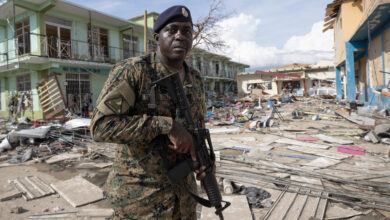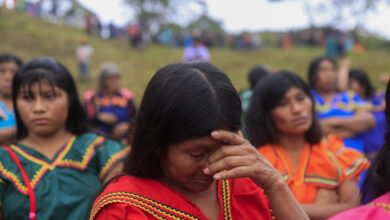Cyclone Freddy in Africa is About to Become the Longest in History
Cyclone Freddy, a powerful weather event that to date has mainly affected the coasts of Africa, threatens to become the longest-lasting event of its kind, surpassing Hurricane John (1994) and San Ciriaco (1988), which lasted 31 and 28 days, respectively.

Photo: NASA, VIIRS
LatinAmerican Post | Julián Andrés Pastrana Cuéllar
Listen to this article
Leer en español: El ciclón Freddy en África, está a punto de convertirse en el más largo de la historia
It is estimated that a hurricane can last an average of nine days, but in 1994 an unprecedented event occurred: Hurricane John lasted 31 calendar days. However, this record could be broken by the so-called Cyclone Freddy, which has already endured a month and left 21 people dead after its passage, as the World Meteorological Organization (WMO) reported.
Formed off the coast of Australia, Freddy became a storm on February 6. Subsequently, it traversed the entire South Indian Ocean until it landed, first in Madagascar on February 21 and three days later in Mozambique.
We suggest you read: Willow Project: US government approved a mega-project for the extraction of oil and gas in Alaska
The Havoc Left by Cyclone Freddy in its Wake
Cyclone Freddy unleashed heavy rainfall and flooding as it passed through Mozambique and Zimbabwe. It then returned to the Mozambique Channel, where it accumulated energy from the warm waters and then moved towards the southeastern coast of Madagascar.
Throughout this journey, Freddy has so far left, according to the UN Office for the Coordination of Humanitarian Affairs (OCHA), a total of eleven fatalities in Madagascar, four of them due to heavy rains, in addition to 3,100 displaced persons and more than 3,300 houses destroyed or flooded.
A dozen deaths have been recorded in Mozambique, 8,000 displaced and 1.75 million affected.
Early Warnings, Keys to Mitigate the Effects of Freddy
Although the natural phenomenon has caused significant social and economic effects, its impact in terms of human losses has not been so high, which is due mainly, as Johan Stander, WMO Director of Services, explains, "to the forecast accuracy, early warnings, and coordinated disaster risk reduction actions.
In this regard, Stander emphasized the advantages of the UN Early Warnings for All initiative, a plan projected to be executed between 2023 and 2027, with investments of the order of 3,100 million dollars, and which seeks to shield the inhabitants of the Earth in the face of extreme and harmful climatic phenomena, such as hurricanes and cyclones, through the implementation of systems that provide a timely warning before they occur.
A Record-Breaking Phenomenon
Finally, the WMO described Freddy as unusual because he has traveled to many areas. Such a phenomenon had only occurred with Leon-Beline and Hudah, two tropical cyclones in 2000. Curiously, as this UN agency points out, the year 2000, like 2023, was the year it had placed the La Niña phenomenon.
For the World Meteorological Organization, this powerful cyclone has already set its own record: "the highest accumulated cyclone energy in the history of recorded storms in the southern hemisphere." The above refers to the amount of wind energy generated by this meteorological event from when it arose until it finally died down.




